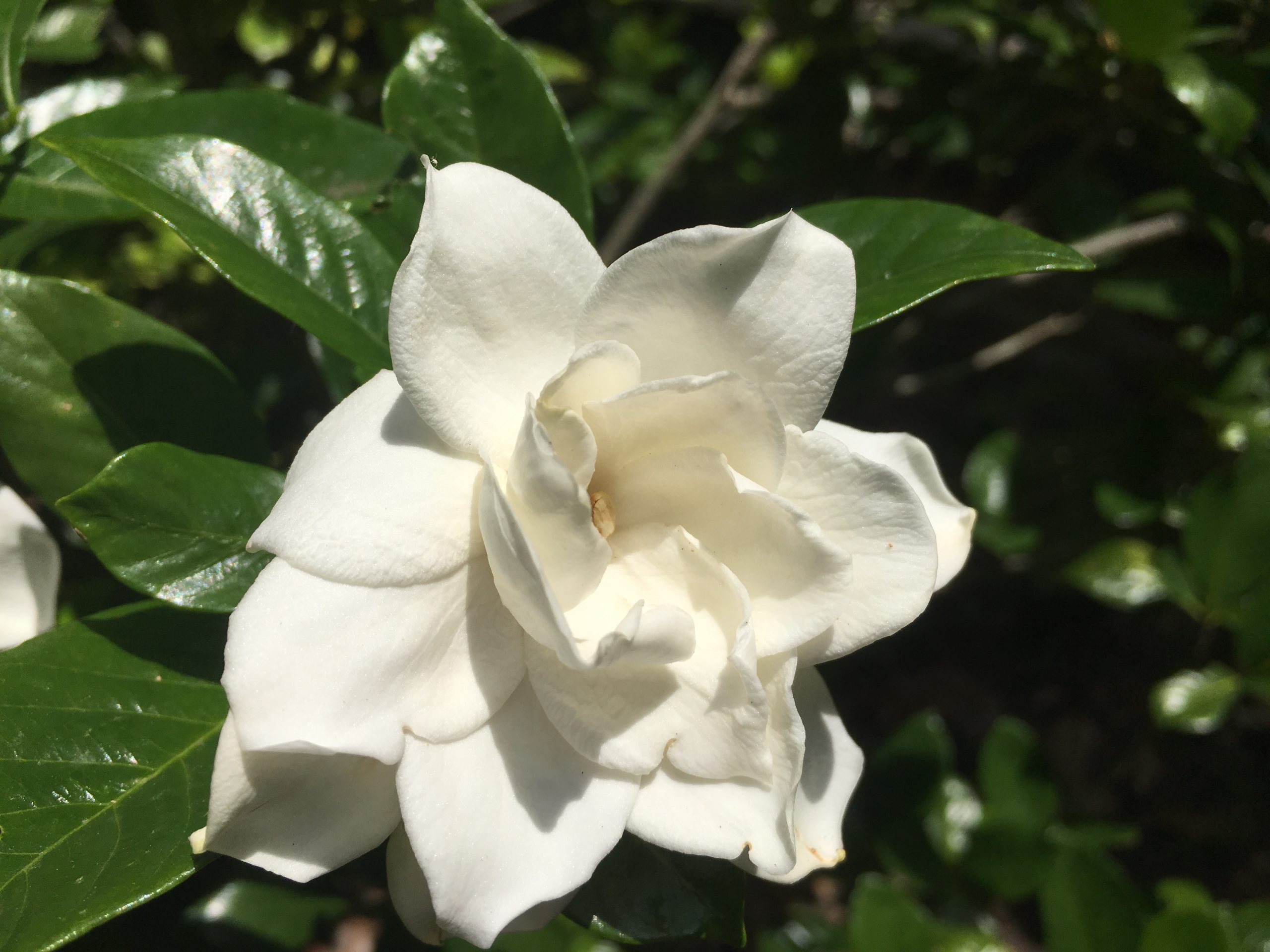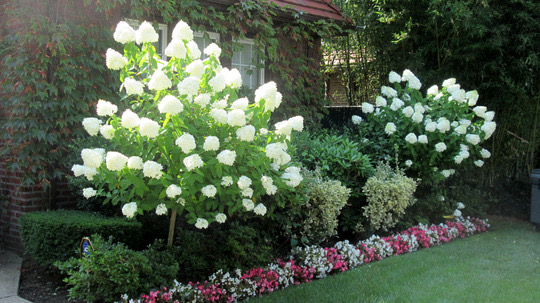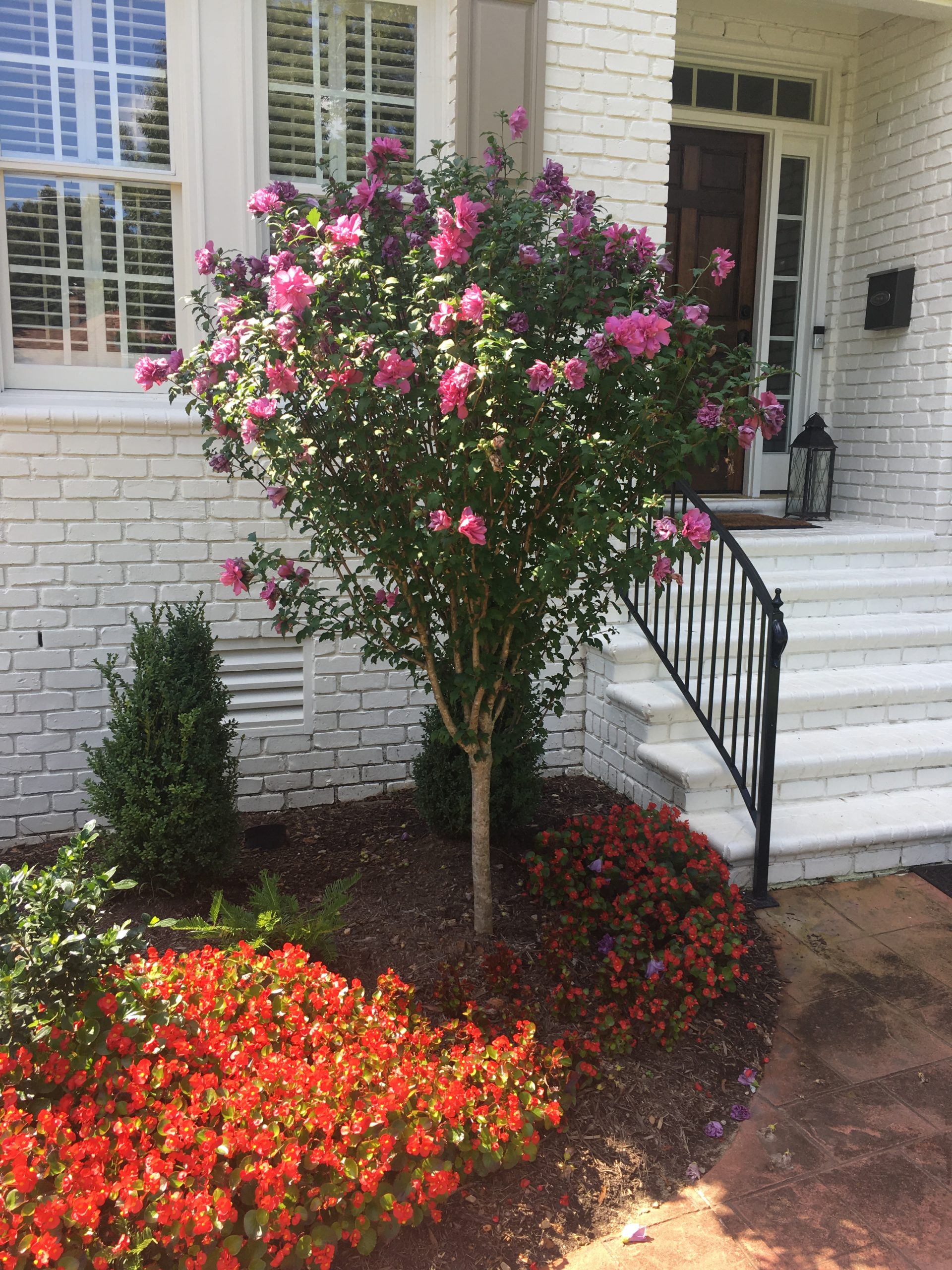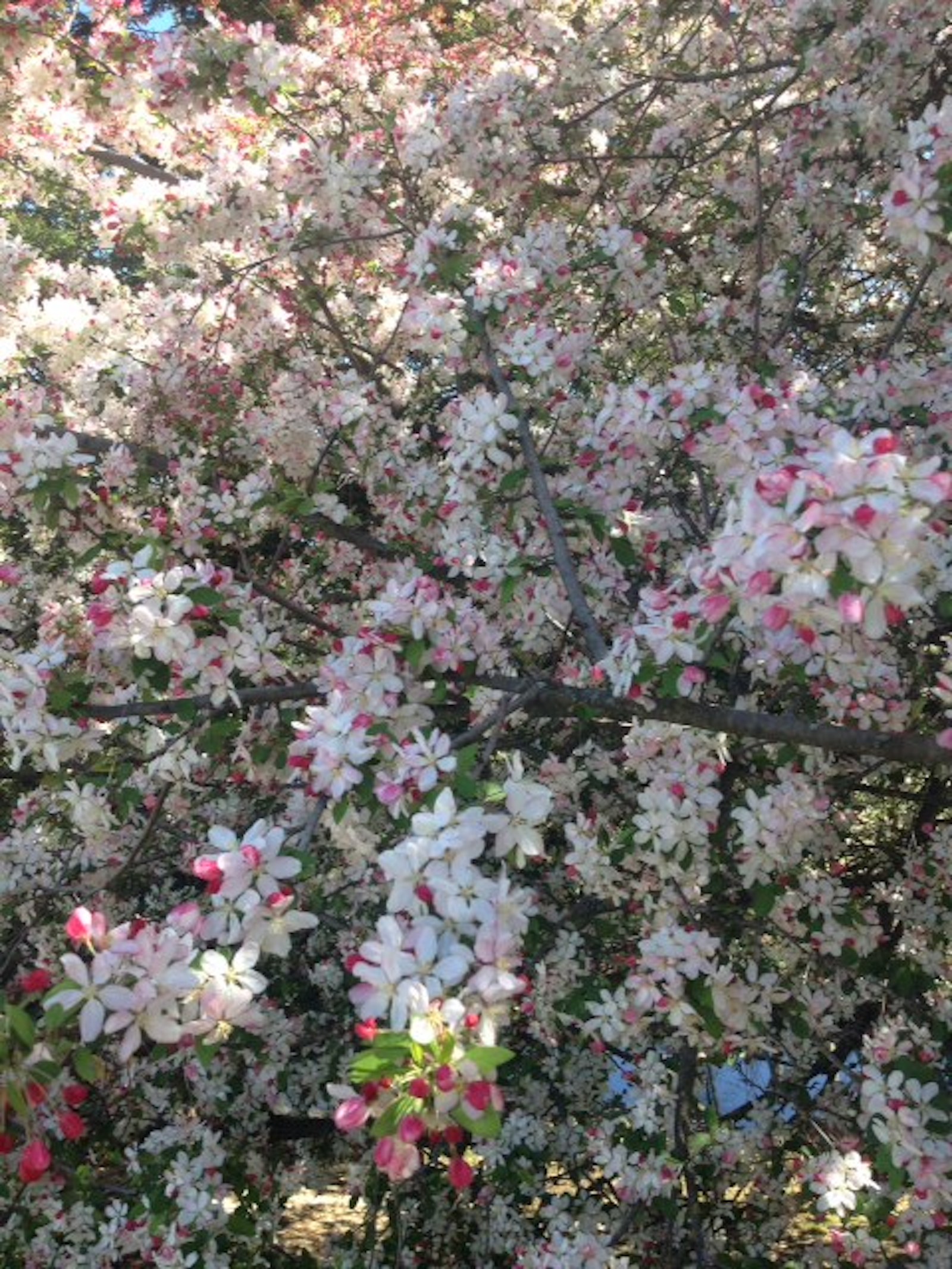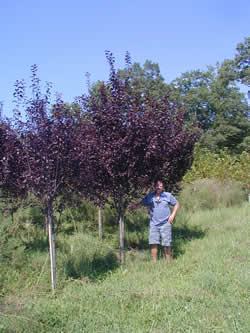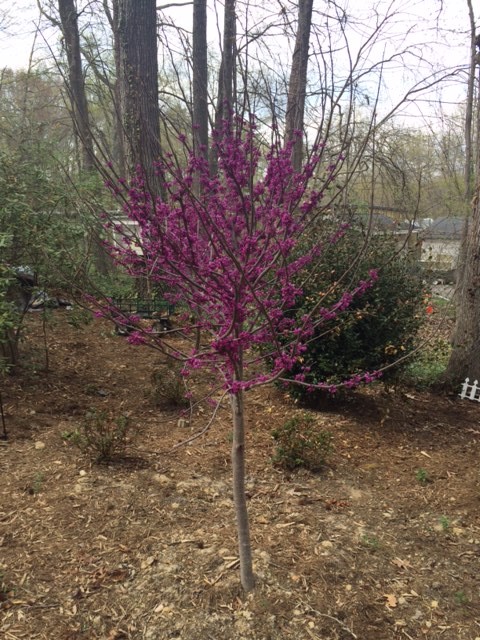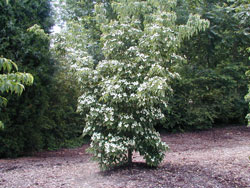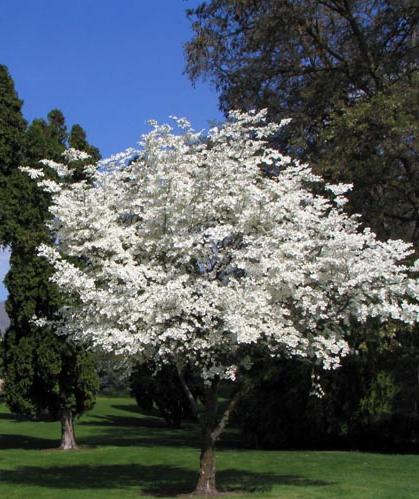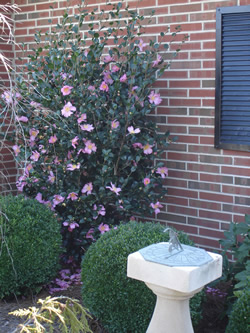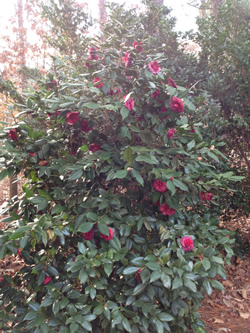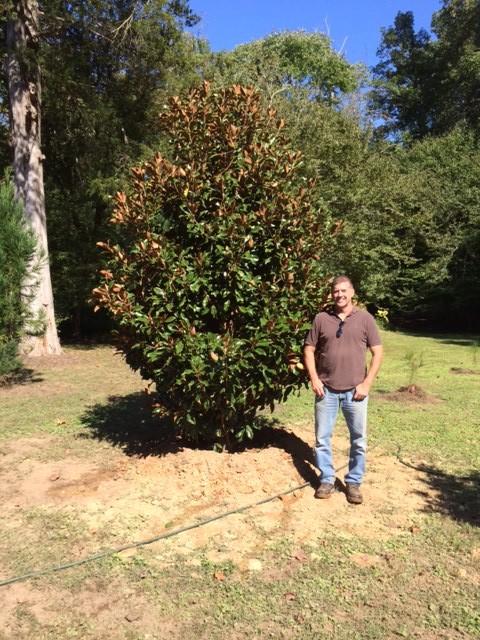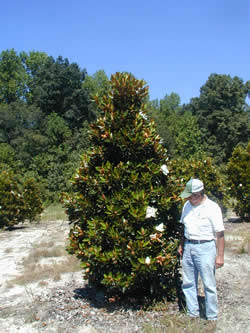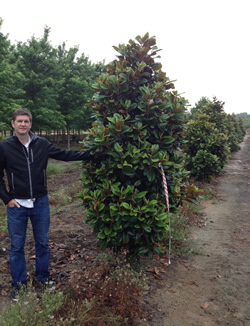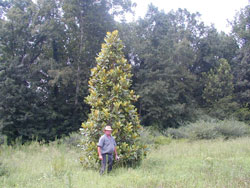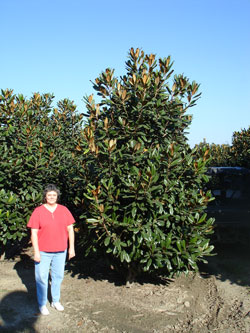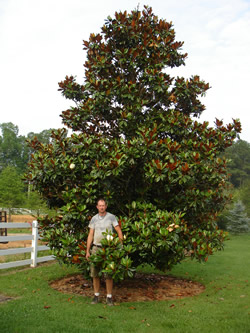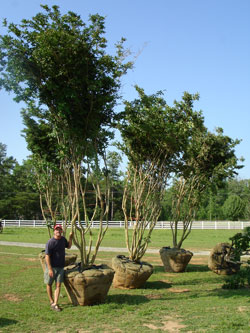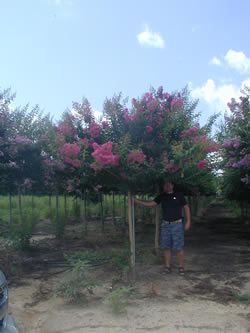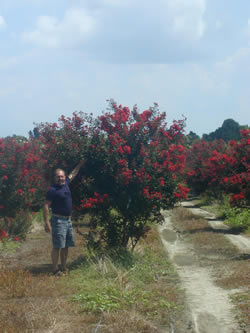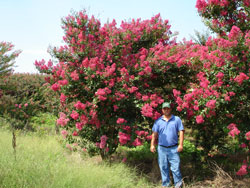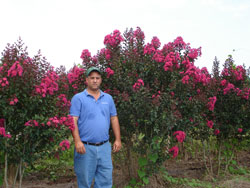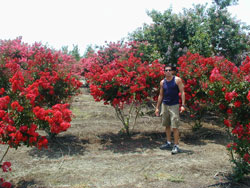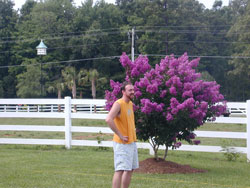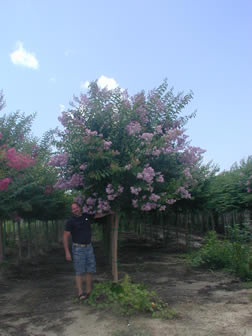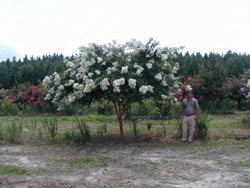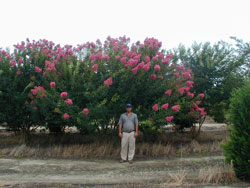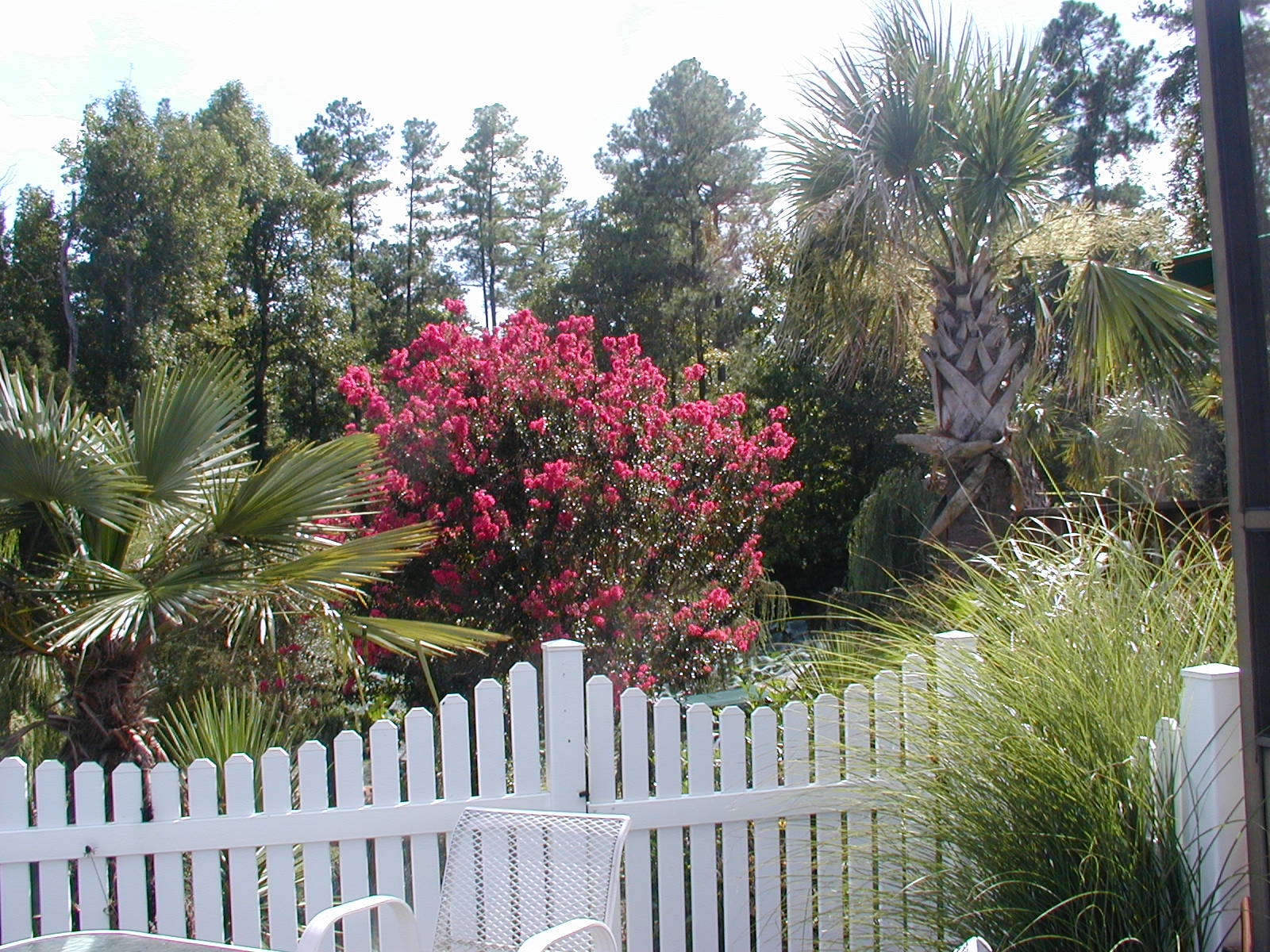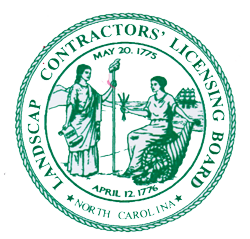Every landscape design incorporates some combination of flowering trees and shrubs, and shade and ornamental trees. Home and Garden Landscapes has a large selection of tree and shrub varieties and we specialilze in hard-to-find large specimen trees to fit every home landscape design. We can help you create an “instant backyard oasis” with mature and large specimen trees.
Thunderbird Plum is used extensively in North American Landscapes. With it’s early Spring profusion of pink blossoms followed by dark burgundy leaves, Thundercloud Plum is a great choice for the landscape needing an instant “pop” with smaller trees.
It is a shorter-lived tree and in general a gardener can get 20 t0 25 years out of it. However, it is a great choice in spite of it’s relative short life-span.
The Eastern Red Bud is one of the first trees to bloom in the Eastern US in Spring. It is quickly followed by the American Dogwood which it is often used in combination with. Colors can vary somewhat from tree to tree making them an ideal choice for some variance in the landscape. Redbud must be moved during dormancy so plan ahead if you want to use this beauty in the landscape.
Kousa Dogwood or the Asian Dogwood is used extensively in landscapes in the US and shows a resistance to the pathogen affecting the American Dogwood. It blooms late in the Spring with its flowers coming after the foliage appears. It exhibits a good amount of heat tolerance in Zones 7 and 8 but does seem to appreciate a bit of afternoon shade in the hotter climates.
The American Dogwood is a favorite in landscapes all over the world. With it’s beautiful floral display in the Spring and smaller stature this is a great choice for smaller garden spaces. Fall foliage is a brilliant red followed by red berries which last into the Winter further elevating this plants desirability. Having been chosen by Virginia and North Carolina as their state flower, this plant has unfortunately been affected by an introduced pathogen from Asia.
Cultivars such as Cherokee Princess are believed to have a greater tolerance and planting in full sun seems to lessen the susceptibility as well.
Gracing the southern garden with blooms when most plants have succumbed to frost and cold, Sasanqua Camellias start their display in Fall and carry over into Winter. Sasanqua is a fast-growing Camellia and comes in a variety of colors including whites, pinks and reds. This plant is an excellent stand alone specimen or can be used for screening. Home and Garden Landscapes have larger sizes in Sasanquas with some of our specimens being in excess of 8 feet in height at the time of installation.
Camellia japonica is one of our favorite choices for off-season color and evergreen foliage in the southern landscape. Japonicas tend to bloom from Winter into Spring often gracing southern gardens with blooms during the winter months. Camellia is great for use as a stand-alone plant or as a screen. Home and Garden Landscapes is unique in that we have larger specimen sizes available and use them frequently in our customer installations.
Claudia Wannamaker Southern Magnolia is one of our favorites. With its upright growth habit, bright green foliage and beautiful blooms, Claudia Magnolia is hard to beat. It’s also suited to today’s smaller landscapes.
Bracken’s Brown Beauty Southern Magnolia is one of the most popular cultivars of Magnolias in use today. With its tight growth habit and suitability for smaller landscapes, its easy to see why this cultivar is so extensively used. It is also thought to have a better degree of cold tolerance allowing it to be used well into Zone 5.
A cultivar discovered in Eastern North Carolina, Lil Gem has skyrocketed to popularity in areas all over the world where it can thrive. Lil Gem’s biggest attribute is it will bloom non-stop from Spring until heavy frosts in the fall whereas other cultivars bloom traditionally in the May and June time frame and then stop.
Moving them can often result in excessive leaf drop but moving them in Summer will mitigate that problem.
Teddy Bear Southern Magnolia is a newer cultivar and has tight and full leaf and branching structures. Being relatively new, it is somewhat hard to find but availability is improving.
Heirloom Southern Magnolia is the original base cultivar of Southern Magnolia. This is the Magnolia you frequently see on old Southern home places which frequently takes up the whole property!!! Roughly translated this is not a cultivar for smaller properties. This cultivar must also be moved in hotter weather and can initially experience excessive leaf drop.
Edith Bogue Southern Magnolia is prized due to its hefty growth habit and its beautiful, robust and fragrant blossoms. Some feedback with plantings further north into Zones 6 and 5b indicate this Southern Magnolia cultivar has a greater cold tolerance. This is a great cultivar if you can find it in cultivation.
D.B. Blanchard Southern Magnolia is one of the most beautiful cultivars of Southern Magnolia in cultivation. It’s attributes include shiny green foliage with brown undersides which resemble dark brown velour and large dinner plate size blooms which smell like lemons.
D.B. Blanchard is more finicky in being transplanted which can often result in excessive leaf drop. Interestingly enough, moving it in the heat of the Summer lessens this situation. We do not recommend moving this plant in the fall and/or winter.
Click to Download the Care Sheet
Tuskeegee Crape Myrtle is a beautiful large growing medium pink with good resistance to mildew that adds a great accent to the garden. It tends to have a taller stature than its width which makes it a good choice for narrower spaces.
Click to Download the Care Sheet
Miami Crape Myrtle is one of the larger pinks in cultivation. It grows moderately fast and has a spread almost equal to its height. If you have room in the landscape, this is a great cultivar to include in your landscape
Arapahoe is another of the red Crape Myrtles. With its smaller size and brilliant coloration, it is a great addition to the landscape. As with most reds it can be hard to find particularly in the larger sizes.
One of our favorites! Tuscarora Crape Myrtle literally explodes with blossoms and has a wonderful spread and height as well as trunk beauty. It’s unique shade of pink adds immense beauty to the landscape.
With its unique shade of pink, Pink Velour Crape Myrtle lends a beautiful color to any landscape. Plants tend to grow slow and taller without the wide spread of some cultivars.
As one of the true reds, Dynamite Crape Myrtle adds incredible beauty to the landscape. Smaller in stature and a slower growth rate make this a wonderful addition if you can find it. As it is a slow grower, it is challenging to find Dynamites in larger sizes.
With it’s grape colored blooms and smaller stature, Catawba Crape Myrtle is prized in the landscape. It grows about as wide as it will tall and works well in landscapes needing a smaller size Crape Myrtle. If you have a sunny spot and can find this plant, we highly recommend it. It is harder to find in cultivation due to it’s slow growth habit.
Muskogee Crape Myrtle is valued for it’s light lavender blooms, robust growth and beautiful smooth trunking and bark habits. If you have the room and want this color, you should consider this beautiful cultivar.
We can’t say enough good things about this wonderful variety of Crape Myrtle. Natchez Crape Myrtle is treasured in the landscape due to it’s beautiful mottled cinnamon bark and rapid growth. It’s white blooms may lack the pop of some of the hotter pinks and reds but it more than makes up for it with it’s trunk coloration.
Plant this beauty where it has room to spread and where you can enjoy it’s bloom colors as well as it’s trunk colors in the fall and winter.
Home and Garden Landscapes has planted hundreds of these over the years and we highly recommend you consider this tree for your landscape.
Biloxi Crape Myrtle is a beautiful medium to dark pink coloring tree valued for its color and spreading growth habit. As with all Crape Myrtles, this tree has beautiful trunk and bark structures making it a beauty in the landscape even during the Winter months.
The Carolina Beauty cultivar of Crape Myrtle is a favorite due to its watermelon colored blooms, medium growth habit and spread and beautiful trunking. Widely planted in the southeast, Carolina Beauty needs full sun to lessen their susceptibility to mildew. These trees also have a very wide spread when mature which must be taken into consideration with placement.
